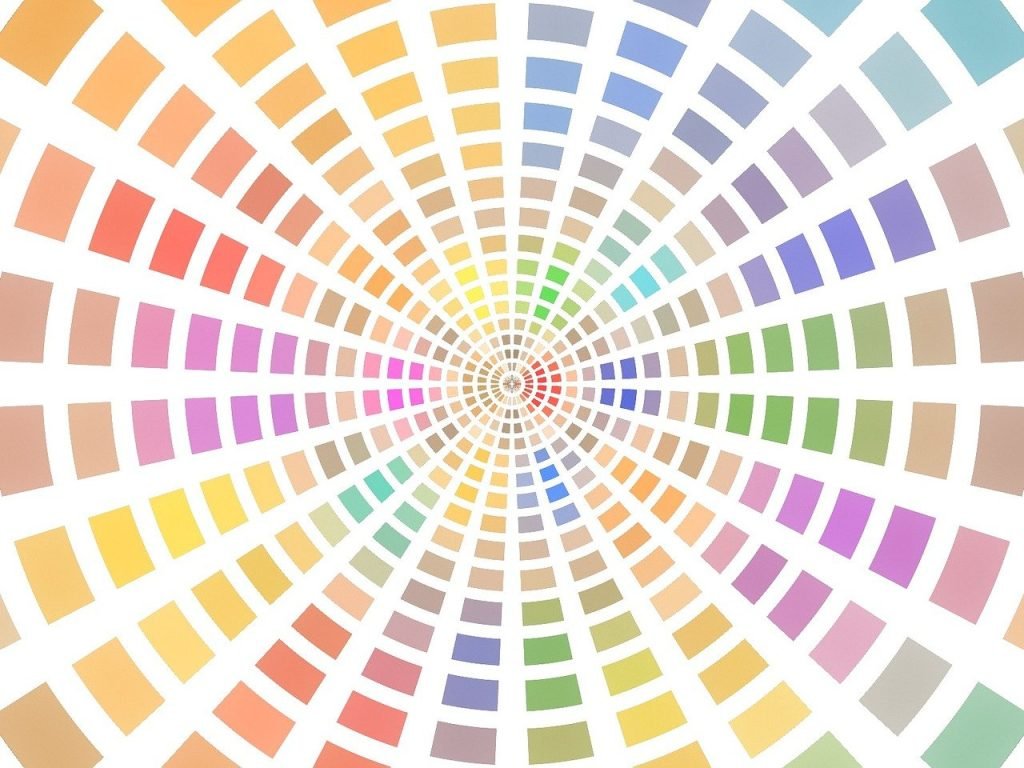Right Color Palette: Creating a visually appealing and consumer-friendly website is critical in the ultra-modern virtual age. An important element that contributes to a website’s general design is the right color palette. Colors can evoke emotions, set the tone, and create a memorable user experience. Selecting the proper color palette is critical if you are building a website for your California-based commercial enterprise or personal mission.
Colors are like the storytellers of your internet site. They could make traffic feel excited, calm, or nostalgic. Imagine a California website with dull, unhappy colors—it just wouldn’t capture the active spirit of the Golden State! Your color palette is your internet site’s first effect, so make it a good one by choosing colors that represent California’s sunny vibes and diversity.
Understanding the Basics of Color Theory
Before diving into the world of shade palettes, let’s take a moment to understand the fundamentals of the color concept. Colors may be categorized into three number-one companies:
- Primary hues (red, blue, and yellow)
- Secondary colors (green, orange, and red)
- Tertiary colorings (created by mixing a primary color with a secondary shade)
The shade wheel is a visual representation of these relationships.
Exploring Color Families
Primary Colors: The Building Blocks
Primary colors, particularly red, blue, and yellow, are the foundational constructing blocks of all other colorings. Think of them because they are vital components in a recipe. You cannot create them by way of blending other colors, but you can mix them to provide a wide range of shades.
Secondary Colors: Harmonious Blends
When you combine two number-one colorings, you get secondary shades. Green (blue-yellow), orange (crimson-yellow), and purple (purple-blue) are examples of those harmonious blends. Secondary colors offer a greater range for your palette and evoke distinct emotions than their primary counterparts.
Tertiary Colors: Subtle Nuances
Tertiary shades come into play when you mix a primary color with a neighboring secondary color. It creates diffused nuances like red-orange, blue-inexperienced, and yellow-crimson. Tertiary colors add intensity and class to your palette, allowing for a more nuanced and subtle layout.
The Color Wheel: Your Creative Compass
Imagine the color wheel as your creative compass. It’s a circular chart that organizes colors based on their relationships. Primary hues take a seat equidistant from each other, forming the triangle that is the inspiration. Secondary hues join the dots, and tertiary colorations fill in the gaps. Understanding this wheel enables you to navigate the substantial global of colors quite simply.
Connecting Colors with Emotions
Red: The Energetic Powerhouse
Red is a color that instructions attention. It symbolizes electricity, passion, and action. When used on your internet site, pink may be a powerful device to spotlight critical factors or evoke a feeling of urgency, making it best for call-to-motion buttons.
Blue: The Trustworthy Tranquilizer
Blue exudes calmness, reliability, and acceptance as true. It’s a versatile shade that may be used to create an experience of professionalism and stability. Consider incorporating shades of blue into your website’s history or predominant elements for a calming and truthful vibe.
Yellow: The Optimistic Sunshine
Yellow radiates positivity, a warm temperature, and optimism. It’s a wonderful color to use for factors in which you want to stand out and grab interest. However, use it sparingly to keep from overwhelming your traffic. Yellow is perfect for accent information or to infuse a feel of cheerfulness into your design.
Green: The Fresh Naturalist
Green is synonymous with nature, freshness, and boom. Incorporating green sunglasses into your California internet site can evoke the feeling of being outdoors and connected to the surroundings. Use inexperience for factors related to nature or to create an experience of stability and harmony.
Orange: The Friendly Energizer
Orange is a vibrant and pleasant color that radiates energy and warmth. It’s an outstanding desire for elements that need to grab attention without being as severe as purple. Consider using orange for buttons, highlights, or other interactive functions to inject a sense of friendliness into your website.
Purple: The Creative Royalty
Purple combines the power of crimson and the stableness of blue, resulting in a coloration related to creativity, luxury, and sophistication. If your California website is ambitious to deliver a feel of creativity or luxury, red sunglasses can be a fashionable preference for certain design factors.
Beachside Retreat
Imagine you’re creating a website for a beachside resort in California. In this scenario, you might use a palette inspired by the colors of the sea and sand. Primary blues and yellows can dominate the overall theme, with accents of sandy beige and aqua green for a fresh and inviting look.

Extending Your Brand Identity via Colors
Your brand is not just a logo; it is the character and values that outline your business. When choosing a color palette for your California internet site, reflect on how colors can make it bigger and beautify your brand identity.
Consistency across Platforms
Consistency is prime in branding. If you already have mounted emblem colorations, incorporating them into your website design is essential. It ensures a continuing transition for customers who are acquainted with your brand on other systems. Consistent use of colors builds logo popularity and is accepted as true.
Aligning with Brand Values
Colors evoke feelings, and these emotions can have an impact on how users perceive your emblem. Consider the values your brand represents. If your emblem is known for innovation and modernity, you might lean in the direction of a graceful and contemporary shade palette. Conversely, if your emblem emphasizes a way of life and reliability, a more conventional and muted color scheme may be appropriate.
Understanding Your Target Audience
Different shades resonate with specific demographics. Understanding your target market is crucial to deciding on colors that attract them. For instance, if your target market is younger and trend-centered, you might choose bold and colorful colors. If your target demographic is extra mature and complex, an extra-subdued palette is probably suitable.
Infusing California’s Natural Beauty into Your Palette
California’s diverse landscapes provide a rich tapestry of colors that may be included in your website design. Let’s discover how you may infuse California vibes into your color palette:
Sandy Beige: Embracing the Beaches
The sandy beaches of California are iconic, and a sandy beige can be a great backdrop for your internet site. This neutral tone provides a warm and inviting feel, harking back to a day on the seashore. Use sandy beige for backgrounds to create a comfortable and approachable ecosystem.
Ocean Blues: Capturing Coastal Charm
The deep blues of the Pacific Ocean are a defining feature of California’s coastline. Incorporating ocean blues into your color palette can bring a sense of calmness. Consider the use of various shades of blue for headers, buttons, or accents to create a coastal allure at some stage in your internet site.
Forest Greens: Embracing Nature
California’s lush forests and country-wide parks are a haven for nature lovers. Infuse forest veggies into your color palette to symbolize the kingdom’s commitment to environmental sustainability. Use inexperienced factors like icons, borders, or a history color to bring a hint of nature to your website.
Sunset Oranges and Palm Tree Greens: Lively Atmosphere
The colorful colorations of a California sundown and the luxurious greenery of palm bushes constitute the country’s energetic ecosystem. Integrate sunset oranges and palm tree vegetables as accent colorations to feature pops of electricity for your website. These active tones may be used for name-to-motion buttons, links, or different interactive factors.
Creating a Harmonious Color Scheme
Now that we have explored the character elements of your coloration palette let’s discuss how to create a harmonious scheme:
Balancing Warm and Cool Tones
Balance is fundamental to a visually desirable color palette. If you incorporate heat tones like sandy beige and sunset oranges, balance them with cool tones like ocean blues and forest vegetables. It creates a harmonious mixture that is both visually appealing and easy on the eyes.
Limiting the Number of Colors
While it is tempting to discover a wide range of colors, restricting your palette can beautify the general brotherly love of your internet site. Aim for a number-one coloration, one or two secondary colors, and an accessory color. This simplicity no longer creates a cleaner appearance; however, it also makes it less difficult for customers to navigate your site.
Testing Color Combinations
Before finalizing your color palette:
- Please take a look at specific combos to make sure they work properly together.
- Use equipment like coloration wheels or online palette turbines to preview how colorations interact.
- Pay attention to the overall experience and clarity of your internet site with the selected color scheme.
Achieving Visual Hierarchy: Guiding Users Seamlessly
Visual hierarchy is an important thing to guide customers through your website’s content effectively. Colors play a vital function in organizing this hierarchy, ensuring unbroken and engaging user enjoyment.
Accent Colors for Call-to-Action: Grabbing Attention
When it comes to prompting consumer interaction, accessory colorings for name-to-action (CTA) buttons are your mystery weapon. Opt for a formidable accent coloration that stands proud from the relaxation of your palette, making it visually striking. The intention is to inspire customers to do so, whether or not it is making a purchase, signing up, or exploring greater content.
Common picks for CTA shades encompass sunglasses of red, orange, or green. These colorings draw interest and create an experience of urgency. Experiment with exceptional shades to discover the one that complements your average palette even as it nevertheless stands out.
Background and Text Contrast: Enhancing Readability
Good readability is critical for keeping site visitors on your website. To obtain this, ensure there is enough contrast between your background and textual content colorings. The precept is simple: when you have a mild heritage, use dark text, and if you have a dark background, use mild text.
High assessment makes it smooth for users to navigate and devour your content. It reduces eye pressure and enhances the general user’s enjoyment. Consider user comments on clarity and make adjustments if important. Striking the proper balance between background and textual content shades contributes extensively to the general appeal of your internet site.
Use Neutral Colors Wisely: Balancing Professionalism and Appeal
Neutral colors, such as whites, grays, or muted tones, are critical in developing a balanced and professional look for your internet site. These colorings are perfect for backgrounds and huge areas, permitting other elements to stand out without overwhelming the viewer.
Incorporate neutral colorings accurately to preserve an easy and uncluttered appearance. They offer a flexible backdrop for text, pix, and different layout factors, ensuring a harmonious ordinary design. While formidable and vibrant colors snatch attention, neutral tones provide a sense of class and balance for your California website.
Accessibility Considerations: Ensuring Inclusivity
Web accessibility is about making your website usable for all and sundry, irrespective of their competencies. Considerations for shade evaluation and legibility are essential in ensuring inclusivity.
Aim for a textual content shade that stands proudly and clearly in opposition to the heritage. Utilize equipment to test the comparison ratio and make modifications if necessary. Prioritizing excessive evaluation contributes to a greater inclusive design, making your content material reachable to a broader target market.
Test for Color Blindness: Designing for Diversity
Color blindness impacts a vast part of the population, and it’s essential to remember these users while designing your color palette. Use tools to simulate how your internet site seems to individuals with one-of-a-kind kinds of color blindness.
Ensure that vital statistics are conveyed efficaciously through alternative visible cues, such as styles or labels. By testing for coloration blindness, you could discover capability troubles and make modifications to create an extra inclusive and person-friendly layout.
Tools for Choosing a Color Palette: Simplifying the Process
Selecting the proper color palette does not have to be a daunting mission. There is user-friendly equipment to be had to simplify the technique and help you find the precise aggregate on your California internet site.
Adobe Color Wheel: Experimenting with Creativity
The Adobe Color Wheel permits you to explore and create shade schemes primarily based on shade idea concepts. It’s a consumer-pleasant tool that helps you experiment with diverse combos and store your favorite palettes for reference. Whether you’re a layout novice or an experienced expert, this device can spark your creativity and guide you in locating the proper colorings for your website.
Colors: Easy Color Scheme Generation
Colors is a straightforward and easy-to-use coloration scheme generator. With a simple press of the spacebar, you could generate random coloration palettes or lock in your favorite colors and permit the tool to suggest complementary shades. It’s an extremely good tool for folks who need a quick and intuitive way to find appealing coloration mixtures.
Palette: Comprehensive Color Assistance
A palette is a comprehensive tool that not only facilitates the creation of shade schemes but also gives information on shade blindness and comparison ratios. It’s a one-stop solution for designing a handy color palette. Whether you are specializing in aesthetics, accessibility, or both, Palette gives valuable insights and assistance during the coloration choice procedure.
Test and Iterate: Fine-Tuning Your Design
Once you’ve selected a color palette for your California internet site, the journey will not quit there. Testing and iteration are vital steps in first-rate-tuning your design for top-of-the-line consumer enjoyment.
Seek comments from colleagues, buddies, or maybe capacity customers. Pay attention to how users perceive your website, and be open to creating changes primarily based on their insights. Conduct usability checking to make certain that your preferred hues beautify each of the visible attractions and capabilities of your internet site.
Conclusion: Crafting an Unforgettable Web Experience
Choosing the right color palette for your California website is an innovative and strategic endeavor. By using information shade concept fundamentals, thinking about your brand identification, reaching a visible hierarchy, prioritizing accessibility, and making use of person-pleasant equipment, you could create a visually lovely and person-friendly website.
Experiment with special color combinations, keeping in mind the numerous landscapes and vibrant environment of California. Test your layout for readability, accessibility, and standard consumer pleasure. Remember, a well-thought-out color palette not only enhances the visible attraction of your internet site but also contributes to a fine consumer experience, making your California website memorable and tasty for site visitors. Craft your color tale with care, and let it resonate with the spirit of the Golden State.

Frequently Asked Questions
Q1: Why is deciding on the right color palette essential for a California internet site?
A: The right color palette on your California website sets the tone, inspires feelings, and displays the essence of the Golden State. It enhances visual attraction and contributes to memorable user enjoyment, making your internet site extra enticing and effective.
Q2: How can I select hues that represent the various landscapes of California?
A: Incorporate earthy tones like sandy beige, ocean blues, and forest greens to reflect California’s natural splendor. Pops of colorful coloring, which include sunset oranges and palm tree vegetables, add a touch of the state’s active atmosphere to your website.
Q3: What position do accessory colors play in a California internet site’s layout?
A: Accent colors, especially for call-to-action buttons, grab attention and encourage consumer interaction. Bold alternatives like sun shades of crimson, orange, or inexperienced create a visually striking impact, prompting users to do so and explore your website further.
Q4: How can I ensure readability on my California internet site with the use of color?
A: Maintain excessive contrast between background and text colors. If you’ve got a mild background, use dark text, and vice versa. It complements readability, reduces eye strain, and ensures that users can easily navigate and consume your content material.
Q5: What are the nice practices for the usage of impartial shades in a California website design?
A: Incorporate neutral colors like whites, grays, or muted tones for backgrounds and huge areas. Neutral colors provide an easy and expert look while allowing different factors to face out, putting a balance between vibrancy and sophistication.
Q6: How can I ensure my internet site is offered to users with visible impairments?
A: Prioritize high comparison for better clarity, and test your color palette for color blindness using equipment. Ensure that crucial information is conveyed via alternative visual cues, making your California website inclusive and consumer-friendly.
Q7: Is there gear to help me select the right coloration palette for my California internet site?
A: Yes, gear like Adobe Color Wheel, Colors, and Palette can assist in deciding on and experimenting with color schemes. These person-pleasant tools simplify the method and offer precious insights into coloration principles and accessibility.
Q8: What have I to keep in mind while best-tuning my California website’s shade palette based totally on personal feedback?
A: Pay attention to how customers understand your website’s aesthetics and capability. Iterate based totally on feedback, behavior usability trying out, and be open to changes to enhance the general user enjoyment.
Q9: Can I use vibrant colors for a California internet site without overwhelming the design?
A: Absolutely! Vibrant shades can be used strategically for accents, highlights, or specific elements. Balancing colorful colors with impartial tones creates a harmonious layout that captures the lively spirit of California without overwhelming the viewer.
Q10: How regularly should I revisit and update my California website’s color palette?
A: Regularly revisit your coloration palette to make sure it aligns with contemporary layout traits, brand identification, and user preferences. Updating your color scheme can breathe new life into your website and keep it visually attractive and relevant through the years.






